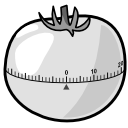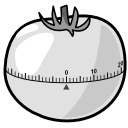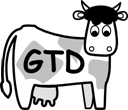 Email has for many become the curse of today’s paperless office. They pile up faster than you can process them. The fact that many emails are impossible to understand, or completely pointless, doesn’t help.
Email has for many become the curse of today’s paperless office. They pile up faster than you can process them. The fact that many emails are impossible to understand, or completely pointless, doesn’t help.
This post lists five principles that will help you write more effective emails that benefit both you and the reader.
Paired with effective filtering and inbox management you stand a much better chance of persevering on the email battlefield.



 As I begun my new job, I moved to Gmail from Outlook. I also upped my daily email barrage.
As I begun my new job, I moved to Gmail from Outlook. I also upped my daily email barrage.


 In an attempt to ride the wave of backronyms like INVEST in your user stories and DEEP product backlogs (though they are now supposedly DEEO ;-)), here's my rule to create task lists for doers.
In an attempt to ride the wave of backronyms like INVEST in your user stories and DEEP product backlogs (though they are now supposedly DEEO ;-)), here's my rule to create task lists for doers.
 People might not like the idea of Scrum for many reasons. Three types of teams that don’t Scrum though they might have heard of it are:
People might not like the idea of Scrum for many reasons. Three types of teams that don’t Scrum though they might have heard of it are: Nothing is more annoying than unproductive meetings. Some things irritate me in particular: people answering phone calls, people working on their laptops, and off-topic discussions.
Nothing is more annoying than unproductive meetings. Some things irritate me in particular: people answering phone calls, people working on their laptops, and off-topic discussions. So, you have planned the meeting. The purpose is clear. You distributed the agenda. You know the dos and don’ts of effective meetings. Then you're all set, right?
So, you have planned the meeting. The purpose is clear. You distributed the agenda. You know the dos and don’ts of effective meetings. Then you're all set, right? This is the third post in a series about applying the Pomodoro Technique® to Scrum and for development.
This is the third post in a series about applying the Pomodoro Technique® to Scrum and for development.
![pomodoro[7] pomodoro[7]](https://lh6.ggpht.com/-VGHuNmYmL9c/T0LIucDyRyI/AAAAAAAAALM/X9yreRZicpI/pomodoro%25255B7%25255D_thumb%25255B1%25255D.png?imgmax=800) This is the second post in a series about applying the Pomodoro Technique® to Scrum and for development.
This is the second post in a series about applying the Pomodoro Technique® to Scrum and for development. This is the first post in a series about applying the Pomodoro Technique® to Scrum and for development.
This is the first post in a series about applying the Pomodoro Technique® to Scrum and for development. In a previous post, I discussed how to conduct effective meetings. However, if you repeatedly find yourself in inefficient meetings, you need strategies to deal with it.
In a previous post, I discussed how to conduct effective meetings. However, if you repeatedly find yourself in inefficient meetings, you need strategies to deal with it. An efficient system for keeping track of things to do is a must have for anyone with a busy life. In this post, I describe my Getting Things Done (GTD) setup in Remember The Milk (RTM).
An efficient system for keeping track of things to do is a must have for anyone with a busy life. In this post, I describe my Getting Things Done (GTD) setup in Remember The Milk (RTM). Have you ever found yourself in a room with people discussing the internal test server’s footer size, or some other similarly insignificant detail? Making things worse, did you go to the meeting because you thought you were finally going to make a decision about that business proposition that could make or break the company?
Have you ever found yourself in a room with people discussing the internal test server’s footer size, or some other similarly insignificant detail? Making things worse, did you go to the meeting because you thought you were finally going to make a decision about that business proposition that could make or break the company?